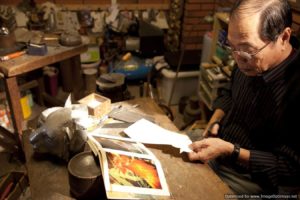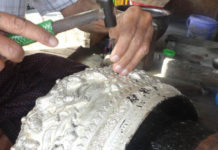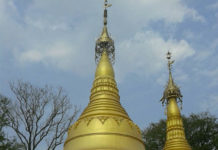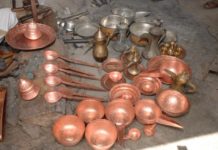Tinware production in human history dates back to the Bronze Age in China, when tin was used for daily utensils and warfare: it developed into a lasting craft tradition. Tin crafts, known as “tin hammering” were carried to Taiwan in the Qing Dynasty. In the past, tin hammering was mainly applied to producing religious utensils. Few items were made for daily home use. Tin shops prospered along the port towns on the west coast of Taiwan, such as Lukang and the famous “Tin Hammering Street” in Tainan.

The tin material has silver-white luster, and its texture is relatively malleable. It can be easily shaped due to its relatively lower melting point. Furthermore, it only requires a simple tool to process tin into delicate and refined end products. The traditional tin utensils include ancestor and divine incense burners, dragon and matrimonial candlesticks, dipper Lamp, pot, cup, jar and box. The basic tin-making techniques are tin-melting, molding, tinplate pressing, cutting, cold forging, welding, riffler-filing, scraping, sanding, washing and decorating.
Tin crafts have been an integral part of folk life in Taiwan. But the tin industry has failed to stem its decline. The reason, first of all, is that religious worship declined during Japanese rule. There was also tin material shortage. After the World War II, tin products made way for industrialised versions. That all contributed to the crisis facing the tin crafts.
Contemporary tin crafts, on the other hand, have emerged as the new tradition. Lukang artisan Chen Wan-neng is leading the way. The Chen family has lived on tin hammering ever since previous generations. Young Chen Wan-neng chose to remain low-profile when facing the industry depression. He later came up with the idea of combining the traditional dragon candlestick and orange lamp, opening up a new market for tinware. Furthermore, he applied realism to creating figures and animal sculpturing to reveal the new landscape for tin crafts.
In 2012, Chen Wan-neng was awarded the Crafts Achievement Award. Chen’s sons all carry on with the family’s tin art. They introduce new composite medium, endowing the tin crafts new manifestations in art. Visitors can pay a visit and have a look at the father and son tin crafts at the Wan-Neng Tin Shop in Lukang.





